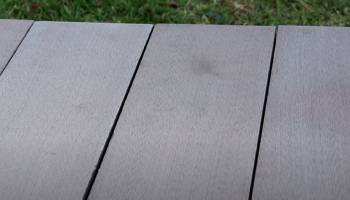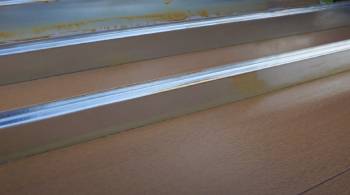Once upon a time, in a world grappling with environmental concerns, a new hero emerged in the construction industry. This is the story of Resysta, a unique material that has been making waves in the building sector.
It is a revolutionary product that combines the best of both worlds – the sturdiness of wood and the durability of plastic. But does it live up to the hype? Let’s dive in and explore.
What Makes Resysta Stand Out?
The secret to Resysta’s charm lies in its composition. It’s not wood, it’s not plastic, and it’s definitely not composite. Resysta is a hybrid material, primarily composed of approximately 60% rice husks, 22% common salt, and 18% mineral oil. This blend results in a product that bears the aesthetics of wood but boasts the resilience of plastic.
Pros of Using Resysta

- Resysta is Eco-Friendly
Resysta takes the crown when it comes to sustainability. Unlike conventional building materials, Resysta is made from renewable resources, such as rice husks, which would otherwise be waste products. This makes it an environment-friendly choice for builders and architects alike.
- Durability is a Key Strength
Resysta is impervious to the elements. It doesn’t rot or splinter, even under harsh weather conditions. It resists water, sunlight, and even pests, making it a long-lasting choice for both indoor and outdoor installations.
- Resysta is Aesthetically Pleasing
Let’s face it; we all love the look and feel of real wood. Resysta delivers on this front, replicating the warm, natural aesthetic of wood almost perfectly. The ability to stain and paint Resysta enhances its versatility, allowing homeowners to customize its appearance.
Read More: About Palmetto Road Flooring
Cons of Using Resysta

- Resysta Can Be Costly
While there’s no denying the benefits Resysta brings to the table, it doesn’t come cheap. The initial cost of purchasing and installing Resysta can be higher than other materials, which may deter budget-conscious consumers.
- Limited Availability
Despite its growing popularity, Resysta is not as widely available as traditional building materials. This may present challenges for consumers looking to source it locally.
Frequently Asked Questions About Resysta
Resysta is primarily made from rice husks, a by-product of rice cultivation. It also contains common salt and mineral oil. This unique combination results in a material that resembles wood but has the durability of plastic.
Yes, you can paint Resysta. One of its advantages is that it can be stained or painted to match any color scheme, providing more design flexibility.
Cleaning Resysta is straightforward. Just use warm soapy water and a soft brush to remove dirt and grime. For stubborn stains, a mild bleach solution can be used.
PVC material can be painted, but it requires a specific type of paint and a bonding primer. Before painting, it’s essential to clean the surface thoroughly and apply a suitable primer for PVC. After the primer is dry, you can apply a latex-based paint.
Resysta is owned by Resysta International GmbH, a company based in Germany that focuses on developing innovative and sustainable building materials.
No, rice husk is not a plastic. It’s a by-product of rice cultivation. However, when combined with salt and mineral oil, as in Resysta, it results in a material that has the durability of plastic but the appearance of wood.
Read More: About Uptown Chic Flooring
Wrapping Up: Is Resysta Worth It?
In the grand scheme of things, Resysta emerges as a promising contender in the world of sustainable building materials. It combines the aesthetics of wood with the durability of plastic, bringing a unique proposition to the table. It’s eco-friendly, durable, and aesthetically pleasing – attributes that resonate with the modern consumer.
However, it’s not without its drawbacks. The higher cost and limited availability of Resysta may be a deterrent for some. But for those who prioritize sustainability and durability, Resysta offers an attractive, long-lasting solution.
In conclusion, whether Resysta is the right choice for you largely depends on your individual needs and preferences. If you’re looking for a sustainable, durable, and visually pleasing material, and you’re willing to invest a bit more upfront, then Resysta could be an excellent fit for your next building project.
Indeed, as we face increasing environmental challenges, the quest for sustainable solutions becomes ever more critical. And in this regard, Resysta may just be paving the way for the future of the building industry.
The Verdict
As our story of Resysta comes to a close, we’re left with a material that seems to straddle two worlds – the natural allure of wood and the enduring strength of plastic. It’s a tale of innovation and sustainability, a narrative that is increasingly becoming a cornerstone in the construction world.
In the final analysis, while Resysta may have its share of pros and cons, it is undeniably a game-changer. It’s a testament to how far we’ve come in our quest for sustainable building materials, and a signpost pointing to where we might be headed next. So, the next time you’re considering a building project, remember the story of Resysta – and who knows? It could be the perfect ending to your construction tale.



